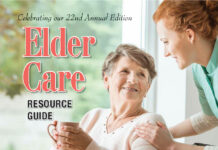By David Crary
NEW YORK—
Baby boomers heading into what used to be called retirement age are providing a 70 million-member strong market for legions of companies, entrepreneurs and cosmetic surgeons eager to capitalize on their “forever young” mindset, whether it’s through wrinkle creams, face-lifts or workout regimens.
It adds up to a potential bonanza. The market research firm Global Industry Analysts projects that a boomer-fueled consumer base, “seeking to keep the dreaded signs of aging at bay,” will push the U.S. market for anti-aging products from about $80 billion now to more than $114 billion by 2015.
The boomers, who grew up in a culture glamorizing youth, face an array of choices as to whether and how to be a part of that market.
Anti-aging enthusiasts contend that life spans can be prolonged through interventions such as hormone replacement therapy and dietary supplements. Critics, including much of the medical establishment, say many anti-aging interventions are ineffective or harmful.
From mainstream organizations such as the National Institute on Aging, the general advice is to be a skeptical consumer on guard for possible scams involving purported anti-aging products.
“Our culture places great value on staying young, but aging is normal,” the institute says. “Despite claims about pills or treatments that lead to endless youth, no treatments have been proven to slow or reverse the aging process.”
Its advice for aging well is basic: Eat a healthy diet, exercise regularly, don’t smoke.
“If someone is promising you today that you can slow, stop or reverse aging, they’re likely trying hard to separate you from your money,” said S. Jay Olshansky, a professor at the University of Illinois-Chicago’s School of Public Health, who has written extensively about aging.
“It’s always the same message: ‘Aging is your fault and we’ve got the cure,’ ” Olshansky said. “Invest in yourself, in the simple things we know work. Get a good pair of running or walking shoes and a health club membership, and eat more fruits and vegetables.”
But such advice hasn’t curtailed the demand for anti-aging products, including many with hefty price tags that aren’t covered by health insurance. These include cosmetic surgery procedures at $10,000 or more, human growth hormone treatment at $15,000 per year and a skin-care product called Peau Magnifique that costs $1,500 for a 28-day supply.
Another challenge for consumers is that many dietary supplements and cosmetics, unlike prescription drugs and over-the-counter medicines, aren’t required to undergo government testing or review before they are marketed. The Food and Drug Administration (FDA) and the Federal Trade Commission (FTC) do crack down at times on egregiously false anti-aging claims, but generally there’s little protection for people who don’t get hoped-for results.
Mary Engle, director of the FTC’s division of advertising practices, said her agency focuses on the cases that could cause serious harm, such as bogus cancer treatments that might prompt an ill person to forgo proper care.
She said the agency lacks the resources to crack down comprehensively on ads with exaggerated claims that exploit customers’ hopes for better looks or more energy.
“Often it doesn’t rise to the level of fraud,” she said. “There are so many problematic ads out there and we really have to pick and choose what we focus on.”
In contrast to the caution of mainstream organizations, there are many vocal promoters of anti-aging products and procedures, including the American Academy of Anti-Aging Medicine. It hosts annual conferences in the U.S. and abroad, and claims 22,000 members, mostly physicians.
In its mission statement, the academy says the disabilities associated with normal aging “are caused by physiological dysfunction which in many cases are ameliorable to medical treatment, such that the human life span can be increased.”
One of the academy’s co-founders is Robert Goldman, a doctor of osteopathic medicine. He contends that much of the resistance to the anti-aging movement comes from sectors of the health and pharmaceutical industries that feel threatened financially — for example by the surging use of over-the-counter nutritional supplements.
Though many anti-aging interventions are expensive, Goldman said people on tight budgets still can take useful steps such as drinking purified water, taking vitamins and using sunscreen.
“People should be healthy and strong well into 100 to 120 years of age,” Goldman says in a biographical video. “That’s what’s really exciting — to live in a time period when the impossible is truly possible.”
Olshansky, who over the years has been among Goldman’s harshest critics, believes there will be scientific breakthroughs eventually, perhaps based on studies of the genes of long-lived people, that will help slow the rate of aging.
In the meantime, Olshansky said, “I understand the need for personal freedom, the freedom to make bad decisions.”
A look at some of the major sectors in the anti-aging industry:
•Hormone replacement therapy — Numerous companies and clinics promote hormone replacement drugs, including testosterone for men and custom-mixed “bioidentical” hormones for women, as a way to slow the aging process.
Many consumers have seen ads featuring muscle-bound Dr. Jeffry Life, now 72. He used testosterone and human growth hormone in his own bodybuilding regimen and recommends hormonal therapy for some of the patients patronizing his age-management practice in Las Vegas.
The FDA has approved hormone replacement drugs for some specific purposes related to diseases and deficiencies, but not to combat aging.
“Finding a ‘fountain of youth’ is a captivating story,” said the National Institute on Aging (NIA). “The truth is that, to date, no research has shown that hormone replacement drugs add years to life or prevent age-related frailty.”
Dr. Evan Hadley, director of the institute’s Division of Geriatrics, said hormone replacement drugs can have harmful side effects. He said there is a need for more research, such as an institute study of testosterone therapy, to identify the potential risks and benefits.
Hormone drugs can be expensive. HGH shots can cost more than $15,000 a year, according to the institute. A hormone-based dietary supplement known as DHEA (dehydroepiandrosterone), a precursor of estrogen and testosterone, is marketed online for $12.95 per capsule by Utah-based NutraScriptives.
Some proponents say over-the-counter DHEA supplements can improve energy and strength, boost immunity and decrease fat. The institute says there’s no conclusive scientific evidence of any such benefits.
Life says he’s a staunch advocate of exercise and healthy eating, but insists that hormone replacement therapy, under a doctor’s supervision, is a crucial addition for some men, and that includes him.
“There’s no way I could look and feel the way I do if all I had done the last 13 years was exercise and eat right,” he said. “Even if you do everything right, if you have a deficiency in testosterone, you will lose the fight.”
Life acknowledged that the cost of testosterone replacement, probably more than $5,000 year and not covered by insurance, could be daunting for some. But he contends the investment pays off in more vitality.
•Cosmetic surgery: According to the American Society of Plastic Surgeons, there were 13.1 million cosmetic plastic surgery procedures performed in the U.S. in 2010, a 77 percent increase over a decade.
One notable trend is increased preference for less invasive procedures that enable patients to get back to work and social settings without a long leave of absence.
The most popular of these is treatment with the wrinkle-smoothing drugs Botox or Dysport. They account for 5.4 million procedures, averaging about $400 per treatment. Other popular noninvasive procedures include soft-tissue facial fillers, chemical peels and microdermabrasion.
More invasive procedures come at a higher price. Face-lifts can run from $6,000 to $15,000; the plastic surgeons’ academy reported performing 112,000 of them in 2010.
Dr. Peter Schmid, who runs a cosmetic surgery practice in Longmont, Colo., said his field is flourishing because of evolving attitudes among appearance-conscious boomers. A recent Associated Press-LifeGoesStrong.com poll found that 1 in 5 boomers either have had or would consider cosmetic surgery.
While the noninvasive procedures cost less than a face-lift, the effects won’t last as long and repeat treatments might be needed several times a year, Schmid said. He advised patients to calculate carefully which type of procedure makes the most sense for them financially.
Schmid, who is on the board of the American Academy of Cosmetic Surgery, cautioned against any rush to try new procedures that get a burst of publicity.
“There’s a certain vulnerability because everybody’s looking for that quick fix, that fountain of youth,” he said. “Many people will shop emotionally instead of objectively, before something has been tried and tested.”
Some critics of the anti-aging industry are supportive of cosmetic surgery, provided the patient can comfortably afford it.
•Skin care — One of the industry’s booming sectors is anti-aging skin care, featuring wrinkle creams and facial serums. By some estimates, the U.S. market for cosmeceutical products — cosmetics with medicine-based ingredients — is approaching $20 billion a year.
The FDA, which oversees cosmetic safety and labeling, doesn’t require manufacturers to prove the effectiveness of cosmetic products before they go on sale, and many ads make claims that critics say are exaggerated or unverifiable. The American Academy of Dermatology recommends consulting a dermatologist on what skin care products have been proved safe and effective in human studies.
Consumer Reports has ventured into the realm of anti-aging cosmetics several times recently, using high-tech optical devices and other scientific methods to assess the products.
Last year, the magazine tested nine face serums, available at drug stores for prices ranging from $20 to $65 and all claiming to reduce wrinkles.
“After six weeks of use, the effectiveness of even the best products was limited and varied from subject to subject,” according to the review. “When we did see wrinkle reductions, they were at best slight, and they fell short of the miracles that manufacturers seemed to imply on product labels.”
Earlier, the magazine tested wrinkle creams.
“Even the best performers reduced the average depth of wrinkles by less than 10 percent, a magnitude of change that was, alas, barely visible to the naked eye,” it said.
Its top-rated product, Olay Regenerist, cost about $19 at the time of the testing. La Prairie Cellular, the most expensive at $335, was rated among the least effective.
Similar conclusions were reached in testing 16 over-the-counter eye creams.
“Even among the best-performing products, wrinkle reduction around the eyes was generally pretty subtle,” the magazine said. “After six weeks of daily use, none came close to eliminating wrinkles.”
It said the most expensive, Perricone MD at $95 a jar, was no better than cheaper drugstore brands.
One recent development in anti-aging skin care is the use of stem cell technology. ReVive’s expensive Peau Magnifique is among the new products, claiming to “recruit adult stem cells into brand new stem cells.”
Neither Consumer Reports nor the FDA has conducted any specific assessment of Peau Magnifique’s effectiveness. On a website called Makeupalley.com, some customer reviews raved about it; others trashed it as a waste of money. — AP












